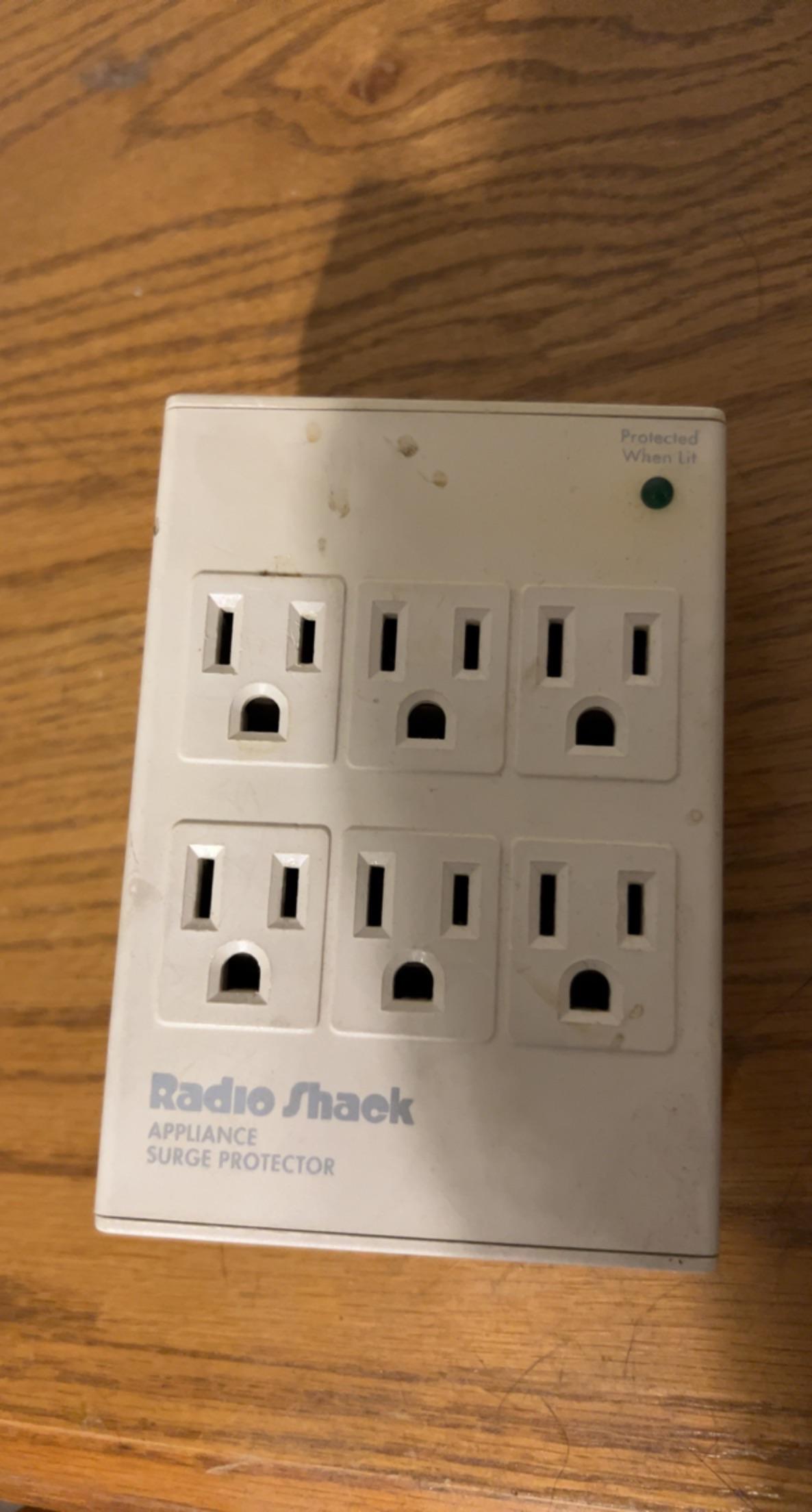Comments
2XGSWsurvivor OP t1_ixwzz3s wrote
Well shit I did not know that, thank you. I don’t use it as one anyways I just enjoy the extra outlets.
Xyspade t1_ixy2ca0 wrote
Still, don't use it if the surge protection light goes out. If any additional surges come in after that, it could potentially violently blow up the MOVs (surge protection component). A good surge protector like a Tripp-Lite Isobar will cut power to the devices once the MOVs are used up.
You could open it and cut the MOVs out, and it would become a basic outlet splitter with no surge protection.
cherlin t1_ixxvz9b wrote
Aren't surge protectors basically just an inline fuse? How would they lose protection over time? If they protect against the surge the fuse would overload and fail and the surge protector would seize to work, or am I misunderstanding how these work?
Xyspade t1_ixy3392 wrote
It's not a fuse; fuses are protection for current (amps), surges are spikes in potential energy (volts).
It's a component (or multiple) called a MOV (metal oxide varistor). They divert surges to the ground pin, but somehow they also absorb the surges and fill to capacity eventually. I don't understand how they could do both because that seems contradictory, but I have yet to find a source that explains it properly.
musclegeek t1_ixy4yln wrote
MOVs resistance changes inversely to the applied voltage. If the voltage across it increases the resistance decreases and vice versa. They are connected to gnd but have a very high resistance for the normal operating voltage. When the voltage spikes their resistance goes extremely low allowing current to pass effectively creating a short circuit to gnd.
Xyspade t1_ixzbaia wrote
Thank you! What about when there's only one MOV between hot and neutral instead of a group of three, how does it pass that spike to ground? Or does it just pass it to neutral?
musclegeek t1_ixzcolo wrote
Neutral is there specifically to handle small surges. Especially in wye configurations and neutral eventually goes to ground. Having it connected to both neutral and ground is a fail safe. No neutral goes to ground, surge too high for neutral goes to both or some large f-up voltage spike from neutral goes to local ground.
PlasmaSheep t1_ixy63lt wrote
Put simply, the MOV acts as an open circuit until the voltage across live/ground or neutral/ground exceeds a "clamping voltage". The MOV then presents almost no resistance, making most of the current flow through it rather than through the device under protection. It gets "used up" because passing current through the varistor affects its structure and increases its clamping voltage.
Xyspade t1_ixzb2h1 wrote
Ah, thank you! So when the protection light goes out, that's its way of telling you the clamping voltage is too high to be useful anymore?
PlasmaSheep t1_ixzy297 wrote
That's right.
Xyspade t1_iy06psp wrote
Makes sense then why people say they should be replaced every few years regardless of whether the indicator is still lit or not. Learned a thing today!
Eric_the_Barbarian t1_ixyt980 wrote
3-5 years service life.
19Chris96 t1_iyayclw wrote
I should think about the 21 and 22 year old surge protector I'm using right now. A computer was struck by lightning while connected to said surge protector (the 2001 model) back in 2007.
Eric_the_Barbarian t1_iybi5do wrote
Broadly, if something is supposed to absorb a destructive energy in order to protect something else (eg. bike helmets, surge protectors, ballistic armor), it should be considered compromised upon such use until it can be replaced or inspected by an expert.
incasesheisonheretoo t1_ixz4851 wrote
I was never aware of this! I’ve got a bunch of these things plugged in all over my house that I’ve been using for decades. Thanks for educating me!
ToddVanAnus t1_ixx68w4 wrote
I miss Radio Shack
squatch42 t1_ixysfol wrote
As a claims adjuster, I highly recommend eliminating all these in your house that you can. Replace all the ones that you can't get rid of entirely every 5-10 years. And never use them on any sort of appliance. Over 60% of the fires I have worked were caused by an old one of these. They all work just fine until they don't.
Porkchop998 t1_ixxd3do wrote
Sorry, I don’t feel like burning my house down.
Own_Variation_6512 t1_ixyyc2e wrote
The six of those fellas have seen some shit, must've been stuck in an outlet of a porn studio.
jigaxx t1_ixznx8x wrote
😟
GM160894 t1_iy0zo1q wrote
Ha this is the same age as me.
vacuous_comment t1_ixx3cdw wrote
Piece of shit.
First, having the ground pin at the bottom is inherently less safe than the converse.
Second, cheapo 6 gang things are just asking for some dipshit to come along and overload stuff.
Third, as mentioned by /u/costabius, surge protectors have short finite lifetime.
statox42 t1_ixyp1hm wrote
What’s the rationale behind ground pins at the bottom being less safe?
scotsdail t1_ixysis9 wrote
In this situation, nothing.
This is done on outlets with metal faceplates because if the faceplate comes loose and falls between the outlet and plug (because of gravity) it will only hit the ground if the ground is at the top. If the ground is at the bottom the metal faceplate is live.
Again, as long as there’s not a metal faceplate there’s no difference. Typically, upside down outlets with plastic faceplates are used to tell you the outlet is controlled by a switch.
Xyspade t1_ixz26hj wrote
The ground pin being at the top or bottom depends on what direction the outlet is orientated, it has nothing to do with this product. If the outlet is installed ground up, so will this protector sit that way.
Alt_dimension_visitr t1_ixz6sp3 wrote
He means the og design and patent and correct way is grounds on top.
But we like smiley faces

costabius t1_ixwzt09 wrote
Surge protectors are not BiFL, They lose their ability to protect from power surges over time. You should replace them every couple of years.